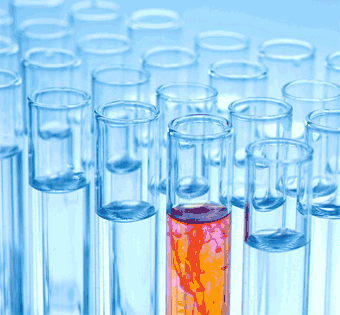Careers in Science: Forensic Scientist

 Forensic scientists apply scientific knowledge and skills to investigate crimes. The information they provide may help the police to find or eliminate a suspect in a crime. Forensic scientists usually specialize in one area of forensics, such as DNA analysis, firearms examination, or toxicology, which is the analysis of body samples for traces of drugs and poisons.
Forensic scientists apply scientific knowledge and skills to investigate crimes. The information they provide may help the police to find or eliminate a suspect in a crime. Forensic scientists usually specialize in one area of forensics, such as DNA analysis, firearms examination, or toxicology, which is the analysis of body samples for traces of drugs and poisons.
The service that forensic analysts provide is invaluable in police and legal work, and their expertise is called upon to detect traces or confirm the presence of substances such as poison, drugs and alcohol, in the human body at post-mortems. This information is then used by the police to assist in solving crimes and by the legal profession to secure convictions or to prove innocence.
Another branch of forensic analysis is in the field of preventive medicine where foods, beverages and habit-forming drugs are tested to determine their safety for human consumption.
Forensic scientists may visit crime scenes to find evidence. They analyse physical evidence such as fibres, glass, debris, firearms, bullets and marks made by tools or weapons. They also analyse biological evidence such as hair, blood and body fluids. They write reports on the results and findings.
They may be required to give evidence in court. They are sometimes called to investigate civil court cases, such as fire or insurance claims. They may travel locally and around the country to attend crime scenes and court cases.
Forensic scientists need to know about using science to investigate crime. They need to understand the chemical make-up of everyday things, such as paint or textiles, as well as that of blood, body tissues and DNA. They also need to know about poisons and drugs, firearms and explosives. The knowledge required will vary, depending on their areas of specialization, which include:
Fingerprinting: There are three main types of fingerprints: arches, whorls, and loops. Each of these has several subcategories. Most fingerprints have a delta (triangular formation) near their core. A visible print is patent while an invisible print is latent. Fingerprints are usually latent and can be found at just about any type of crime scene .
Document analysis: The vast majority of the crimes that take place involve paper or are committed on paper. Everything about the paper concerned is a potential clue. Document analysis includes handwriting analysis, fraud and forgery.
Firearms and ballistics: The science of ballistics allows matches to be made between firearms and their ammunition.

Explosives: This involves analysis of bomb components, that is, its power source, its initiator, and its explosive substance. If a bomb explodes, analysts examine the bomb’s residue by scanning the debris for fragments of the bomb in order to piece together its composition.
Forensic anthropology: To a forensic anthropologist, truth lies embalmed in the marrow of the dead. By examining the various characteristics of a person’s bones, certain deductions may be made about their age from the fusion of bones; diseases suffered, from bone erosions and anomalies; gender, from the size, characteristics and shape of bones; and race, from bone characteristics and shape
Chemistry and toxicology: To analyze substances for chemicals, including poisons and drugs, forensic scientists use such instruments as mass spectrometers, which provide molecular “fingerprints” of unknown substances; X-rays, to detect potassium cyanide and other chemical; dielectrometers, which send out electric impulses and record energy absorption, marking differences such as wall imperfections or different densities.
Behaviour profiling: Forensic analysts attempt to solve crimes by understanding a criminal’s MO or “Modus operandi”, which is the method by which a particular criminal commits a crime, including the time and place, type of crime, property involved, victim type, tools or implements used, disguises, props, or associates. Of significance are “signatures” or the psychological “calling cards” or imprints, some criminals are motivated to leave.
Blood: When a sample of blood is sent to a lab, as in any other science of identification, there are things that can be read from it, and others which remain elusive. Certain things about the donor can be determined from blood (excluding the process of DNA testing) such as whether it is animal or human and the blood grouping (A, B, AB & O), besides types of genetic markers, which are specific enzymes and proteins.
Entomology: A dead body attracts flies. Forensic entomologists use the clues provided by flies to find out exactly how long the body has been dead.
DNA (deoxyribonucleic acid): DNA has been called the biological equivalent of fingerprints. As with every person, each DNA arrangement is unique, the only exception being in the case of identical twins.
Hair and fibres: Based on the theory of transfer, which states that when a person comes into contact with another person or place, there is a transference of evidence to that person and to that environment, and vice versa.
Photography: Photography when it was first developed, quickly replaced branding as the preferred means of identifying criminals. Now standardized criminal photographs, known as the “mug shots”, are essential forensic tools.
Photo-identification: One of the first crime scene activities is the taking of photographs. Their value as evidence is obvious: they are visual testaments to an inaccessible point of the past; permanent records that allow other evidence to be preserved.
Surveillance: Film is an important part of surveillance, which is the secret monitoring of suspected criminals in the hopes of gaining vital information and which might lead to arrests, etc. Specialized equipment is necessary for long-range photography and for hidden cameras that must operate for long periods without maintenance.
Satisfying Aspects
– solving problems and puzzles
– helping to solve crimes
Demanding aspects
– the possibility of coming into contact with human body fluids
– firearms, explosives and chemical hazards
– visiting unpleasant and distressing crime scenes
Requirements
A forensic analyst should:
– have a scientific aptitude and skill in interpreting scientific results
– be thorough, methodical, accurate and careful
– be honest, responsible and able to keep information private
– have well-developed problem-solving skills
– have excellent written and oral communication skills
– have good eyesight, very observant and an eye for detail
– have analytical and organizational ability
– have maturity and self-confidence to cope with rigorous cross-examinations
– have strong stomach to deal with some very unpleasant crime scenes
School Subjects
National Senior Certificate meeting degree requirements for a degree course
National Senior Certificate meeting diploma requirements for a diploma course
Each institution will have its own minimum entry requirements.
Compulsory Subjects: Mathematics, Physical Sciences
Recommended Subjects: Life Sciences
Training
Degree: BSc majoring in Chemistry, Analytical Chemistry or Pharmacology is recommended – all universities.
Diploma: Forensic Investigations – UNISA, UWC, Intec and Damelin. N.Dip: Chemistry / Analytical Chemistry. – CPUT, DUT, TUT, VUT, UJ.
Many practical forensic science skills are also gained on the job. Once employed, training is given in the specific scientific techniques required in the job.
Employer
– Department of National Health
– South African Police
– Government laboratories and offices
– Private laboratories
Contact
Forensic Engineering Association of S A
Tel: 9011) 607-9500
www.forensa.org.za




